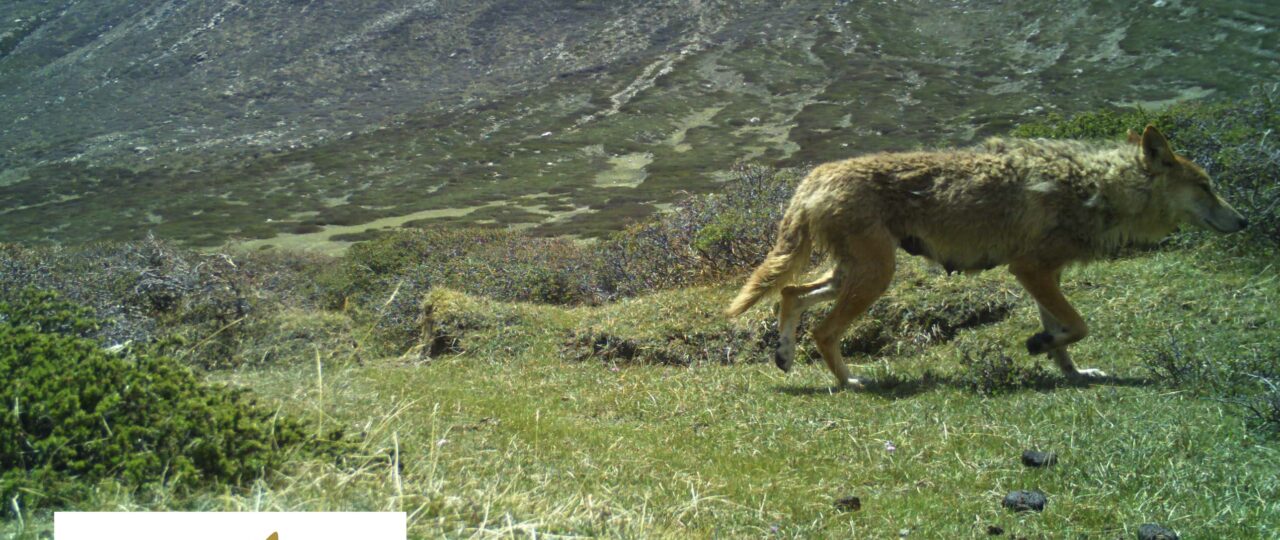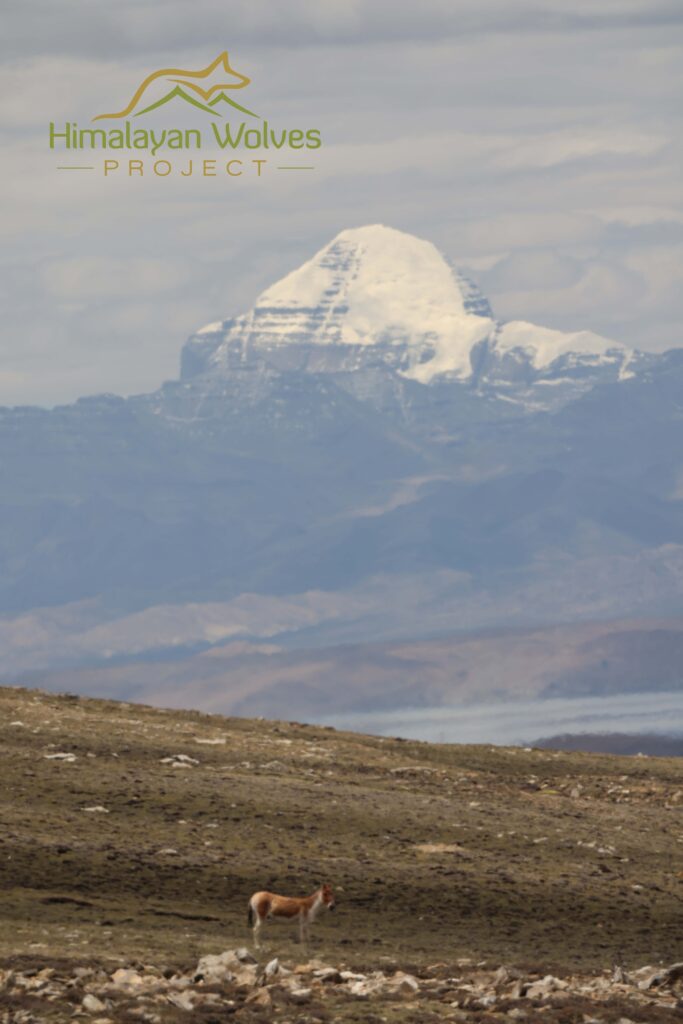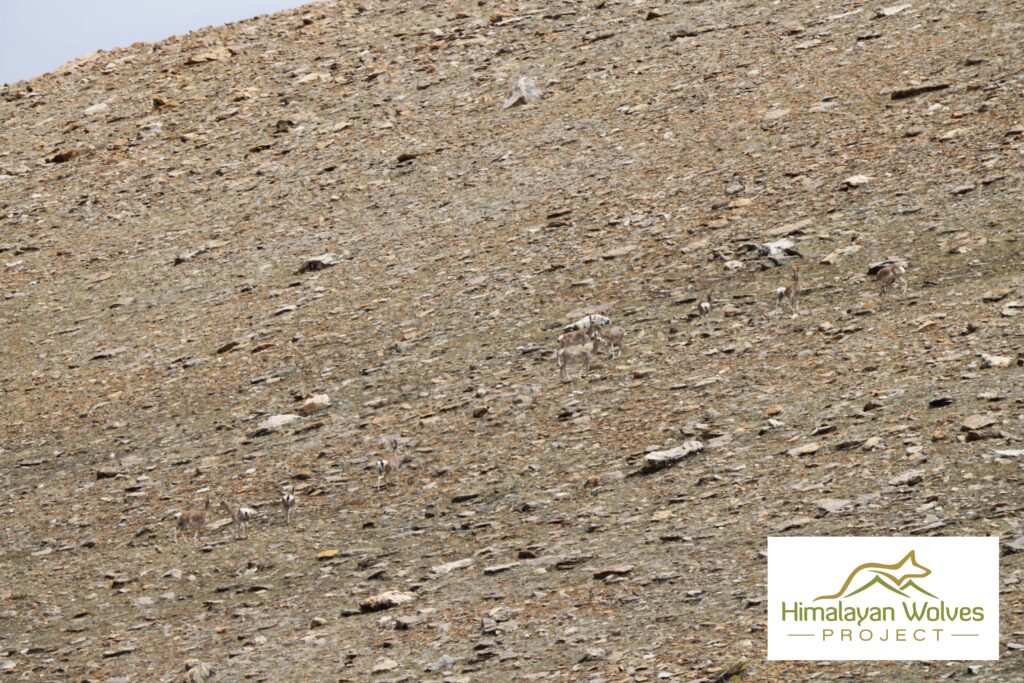Insights from the Field Expedition 2022 to Upper Humla
When humans see a wolf, they often feel either fascination or fear, they have a feeling of being deeply touched by an encounter with a wild animal or they see the unwanted killer of their livestock and livelihoods. Well wolves and other contested carnivores are much more than these extreme perceptions. They are sentient beings of another species sharing the planet with us human animals and they need healthy spacious habitats to go about their lives just as we do.
Hidden from human perception, wolf family life unfolds, relationships form and mature, and one generation after the other goes about their ever changing lives. Wolves have a highly evolved cognition and have complex social lives including friendships and adversities. They live in family groups called packs which are comparable to human families. Parents live with their offspring which eventually disperse to go about their own lives. Wolves interact with each other in sophisticated ways using multiple channels such as voice and ears (auditive), body language (visual), and smell (olfactorial).
This year 2022 was our second year in a row of observing the same wolf packs in upper Humla. Last year 7 pups had been born to one of the packs. At least three of these pups have grown up and still roam with their natal pack. But we don’t know anything about the fate of the other four wolf pups from last year. They may have already dispersed to find a mate and territory and form a new pack, or they may have died, by the hand of humans or disease. It is natural for young wolves to leave their parents around the age of one year, but many also stay with their parents a little longer and help raise the new pups.
Human pressure has decreased in our study area in the last few year, very much in favour of all wildlife. But some recent administrative policy change may put this positive development for wildlife in the area at substantial risk. Evidence of such positive development resulting from the low anthropogenic pressure gently applied by the local communities from Limi is for example the increasing population size and range occupied by the near threatened black necked crane (Grus nigricollis). While for at least the last decade only one pair was seen in Ningh khola (khola = river), we observed another pair this year 2022 in another valley much higher up! And the pair seemed in good shape for breeding. Fingers crossed! Wild yaks increasingly roam across the border to benefit from the good foraging grounds in the area, and competition between livestock and wild grazers like the Kiang (Equus kiang) is less due to lower numbers of livestock brought into the area. Herders still come up to the habitats seasonally with their livestock. But favourable to wildlife, they come later in the season as the place is harsh, cold and windy. Livestock numbers are less, although they still fluctuate lots from year to year. People prefer to herd their livestock in the lower places where its warmer and less windy for as long as possible. Wildlife is benefiting, they don’t mind the harshness! And for the wolves specifically it is very beneficial if the herders with their livestock come a little later in the summer season when the wolf pups are already a little bigger and able to roam larger distances, opposed to herders with livestock flooding the valleys in spring when the wolf pups are still very little and not able to move far distances yet (which then often results in conflict). And this is exactly how conservation works: understanding both the needs of humans and wildlife and then finding ways so that both can benefit and thrive.
Our wolf pack has a new littler this year, but well hidden from our curious scientist eyes. The black father often roams with his pups from last year, which are now yearlings. The lactating whitish mother on the other hand is rarely seen and if so, she is captured by a camera trap as she hurriedly moves along the valley floor looking super skinny but clearly lactating. Probably she is eager to rush back to her still very little pups of this year! I hope we will get to see them eventually. Are some of the pups maybe black like the father?
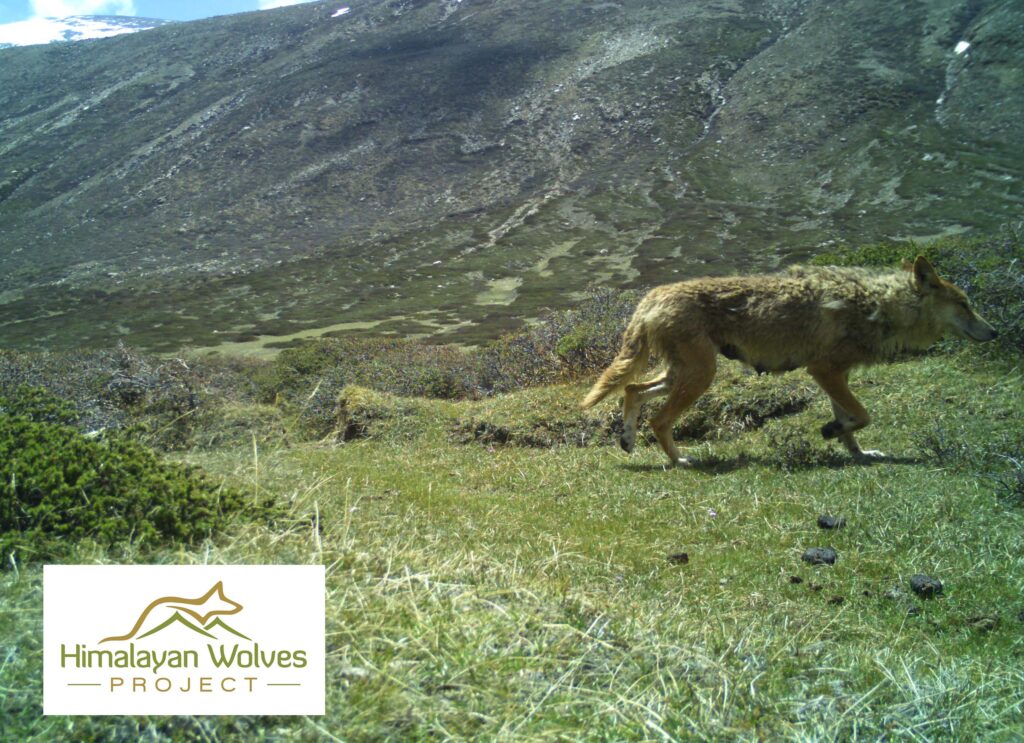
Lactating wolf female. Likely rushing back to her litter of pups well hidden somewhere in the rocky slopes.
The populations of ungulates such as Kiang or Tibetan gazelle (Procapra picticaudata) are in very good shape this year. Last year’s winter snow has not been too deep although the winter was a very cold one, and human pressure is low in the habitats these weeks. This small area in the north-westernmost corner of Nepal presents a little safe heaven for wildlife. Our team works hard to help keep it that way: Keeping the last wilderness places truly wild!
Across the border not far to the north, the land is also immensely vast, overlooked by Mount Kailash and grounded by Manasarovar Lake. The wolves don’t care about borders. The animals roam widely and are part of a larger population across the plateau.
However we don’t know anything about the total population numbers of the Himalayan wolf! We don’t have any reliable estimate and this is a critical data lack that needs to be filled to advance conservation and science of these wolves, their prey, and habitats. While here in this little remote corner in the northwest of Nepal, life for wolves currently seems okay (well the administrative policy change mentioned earlier is worrying and can change this rapidly), across the border to the north, human pressure may be very different. Persecution of carnivores is a big threat to carnivore species survival around the globe. While the potential range of the Himalayan wolf may be big, we don’t know what is the true state of the populations on the ground. There may be large patches of land where the wolf packs can live their lives, but there may also be vast patches of land where lethal persecution of wolves is very high, with firearms, traps, and burning of den sites being effective extermination measures for entire populations segments. Hence shedding light on Himalayan wolf population size and effective distribution is one of the big research topics that our team at HWP currently works on. Other hot topics for us at the moment are wolf population connectivity within Nepal and deeper insights into the fascinating social life of these wolves, and much much more. Ultimately all we do aims to protect these high altitude ecosystems.
As one of my greatest mentors would say, keep smiling! More to come soon….
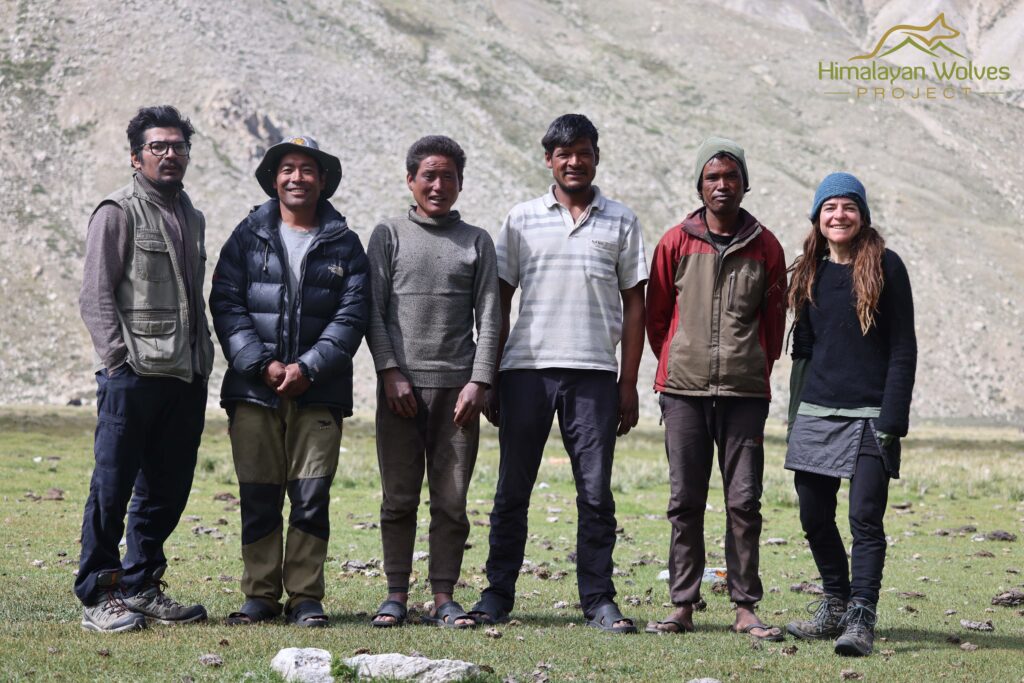
Our field team for 2022 at the end of another successful expedition. But missing our equine team members: 14 mules and 1 horse!
